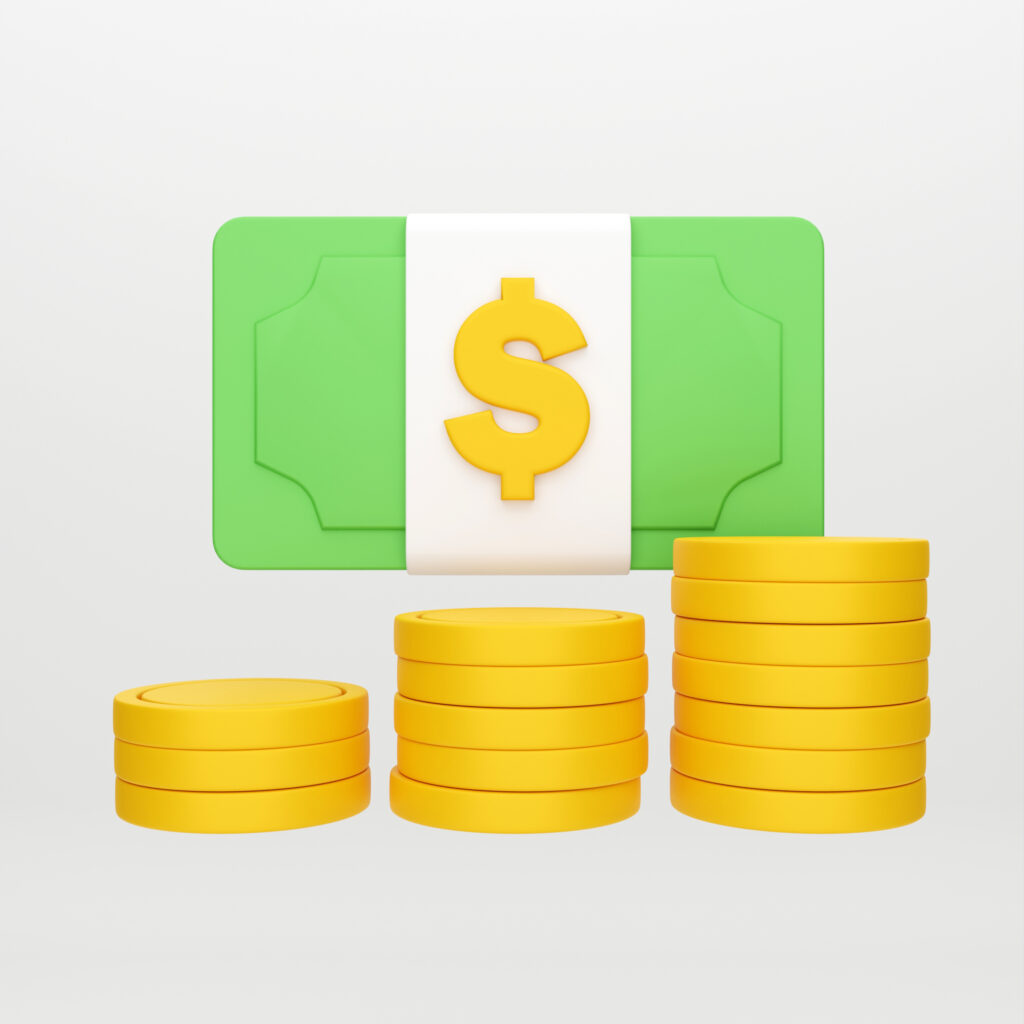We all find it hard to be responsible with our money because most of us really do not know what to do with it. We get a paycheck and immediately buy whatever our heart desires as opposed to doing the right thing and saving it.
People in countries aside from America always save a certain percentage of their paychecks.
For example, Europeans will save approximately 18% of their income while those in Japan will save around 25%. We as Americans tend to spend more than we make, averaging 1% in debt each year.
This ideology of saving money comes down to financial literacy which is something not taught in schools, primarily in the States. This is why people are constantly living in debt with no savings and somehow expect to get ahead in life.
The argument that “if I made more money, I would be able to save” is a joke. You can easily start saving now by putting a small percentage, even 10%, into a savings account.
Stop coming up with excuses to not save and start being responsible with your money. Winning the lottery will not solve your problems and is something not to rely upon. Instead of wasting money on lottery tickets, just put it towards something that could generate a passive income.
Learning how to use money is purely a game with real-world consequences. Like any game, there are rules and strategies to learn. Financial literacy is understanding those rules. Once you grasp the basics of saving, budgeting, and responsible spending, you can start to make your money work for you.
Put financial understanding on your priority list and start educating yourself on how money needs to be used. This will be one of the greatest accomplishments you could easily achieve.
The Money Game
Think of money as points in this game. You earn points through your income, but you lose points through unnecessary spending. The goal is to maximize your points by learning about smart saving strategies.
Utilizing high-yield savings accounts or building an emergency fund can amplify your point gain. You can also learn to “spend strategically,” focusing on experiences and necessities that bring you long-term value.
Finally, there are advanced tactics like tax breaks. Taxes are a necessary part of the game, but just like finding hidden point multipliers, understanding tax deductions and credits can help you keep more of your hard-earned points.
Imagine planting a seed that represents your initial savings amount, no matter how small. Similar to compound interest, where each earned bit of interest gets added to the total amount that earns even more interest, every little bit you save consistently adds up.

Over time, those small deposits, like sunshine and water for your seed, begin growing into something substantial. The longer you keep saving, the more your savings benefit from this compounding effect.
This analogy applies to everyday expenses you might not notice like the daily coffee drink or impulse buys at the checkout line. These insignificant amounts act as tiny weeds stealing nutrients from your growing plant, thus hindering your financial progress.
However, by identifying and eliminating these unnecessary expenses, you are freeing up more money to add to your savings. Removing weeds allows your plant to flourish, ridding these small expenses, and allowing your savings to grow faster.
Remember, consistency is key. Even a small acorn, consistently watered and nurtured, will grow into a mighty oak. The same goes for your finances. Small, consistent savings efforts and adjustments to your spending habits, like eliminating those tiny weeds, can lead to significant financial growth over time.
Prevention is Key
Prevention is where most seem to mess up. People start taking vitamins once they become sick, instead of taking them daily to avoid sickness altogether.
Just like regular health checkups help identify and address minor health issues before they snowball, proactive financial management tackles small spending leaks before they turn into major debt or hinder your long-term goals.
The same concept of preventative maintenance can also be applied to financial management:
- Regular Budget Reviews. Schedule regular check-ins with your budget, say monthly or quarterly. Track your income and expenses to identify areas where you can optimize your spending and ensure you are on track with your financial goals.
- Emergency Fund Check-Ups. Similar to how you check your car’s oil, review your emergency fund regularly. Is it enough to cover unexpected expenses? Adjust your contributions as needed to ensure you have a safety net for financial emergencies.
- Debt Monitoring. Keep an eye on your debt – interest rates, minimum payments, and payoff timelines. Develop a plan to pay down high-interest debt and monitor your progress.
- Investment Review. Insist on regular reviews of your investment portfolio. Rebalance if needed to maintain your target asset allocation and adjust for any life changes that might impact your risk tolerance.
- Financial Product Checkups. Review your insurance policies, warranties, and subscriptions annually. Ensure you have adequate coverage and you are not paying for unnecessary services.
Taking charge of your finances allows you to make informed decisions about your money and plan for the future with confidence.
By taking these preventative measures, you can identify and address small issues before they snowball into significant financial problems. This proactive approach to financial management will save you money and stress in the long run.
The ‘Latte Factor’
We have all heard the saying, “a penny saved is a penny earned,” but what about those seemingly insignificant, everyday expenses?
That grab-and-go coffee on your way to work might seem like a harmless treat, but those $5 purchases add up quickly. Over a year, a daily coffee habit can cost you $1,250 – enough for a fantastic vacation or a hefty contribution to your savings goals.

This is known as the “latte factor” – a term coined by financial author David Bach to illustrate the impact of small, habitual spending.
Bach argues that by cutting back on these seemingly insignificant purchases and investing the money saved, individuals can accumulate substantial wealth over time.
Let us take a closer look at some common culprits:
- Impulse Purchases. Impulse purchases are the spontaneous splurges we make without much thought or consideration. The key to tackling impulse purchases lies in mindfulness. Before reaching for your wallet, pause and ask yourself if you truly need it.
- Monthly Subscriptions. Streaming services, gym memberships, subscription boxes – the allure of convenience and recurring deliveries can easily lead to a plethora of monthly subscriptions. While each subscription may seem affordable on its own, the cumulative cost can significantly impact your finances.
- Daily Items. That daily latte, the vending machine snack, the bottled water – these seemingly small expenses can accumulate surprisingly fast. Consider preparing your coffee at home, packing snacks, and carrying a reusable water bottle to reduce unnecessary daily spending.
The ‘latte factor’ is not about deprivation but about making conscious choices and prioritizing long-term financial goals over short-term gratification. It is about finding a balance that allows you to enjoy life while saving for the future.
Once you have identified those sneaky “latte factor” expenses through expense tracking, it is time to take control with a budgeting strategy.
Budget Breakdown
Taking control of your finances starts with understanding where your money goes. A budget breakdown is your tool for empowerment, allowing you to identify your fixed expenses, manage your variable expenses, and strategically plan for your savings goals.
A comprehensive budget should consider three main categories:
- Fixed Expenses. These are predictable expenses that stay relatively constant each month, such as rent/mortgage, utilities, car payments, and insurance. These recurring essentials will form the foundation of your spending.
- Variable Expenses. Expenses that can fluctuate month-to-month, including groceries, gas, entertainment, and dining out. Mindful choices will help eliminate this category and lead to significant savings.
- Savings Goals. This category represents the money you allocate towards your financial dreams, such as an emergency fund, retirement savings, or a down payment on a house.
By dissecting your spending into fixed expenses, variable expenses, and savings goals, you will gain the clarity needed to make informed financial decisions.
This understanding forces you to build a budget that aligns with your values and aspirations, ultimately leading to financial well-being.
Creating a Budget Blueprint
This is where your budget breakdown can get more detailed and allow you to focus even more on how your money is spent.
Creating a personalized budget blueprint is the foundation of financial management. By following key steps, you will gain the clarity and structure needed to make informed financial decisions and achieve your goals.
Here is how to build your personalized budget:
- Gather Information. Start by collecting your financial statements, pay stubs, bills, and receipts from the past few months. This will give you a comprehensive view of your income and spending patterns.
- Calculate Income. Determine your total monthly income, including your salary, any side hustles, or other sources of revenue.
- List Fixed Expenses. Identify your recurring, essential expenses like rent/mortgage, utilities, loan payments, and insurance premiums. These are the non-negotiable costs that form the foundation of your budget.
- Track Variable Expenses. Monitor your discretionary spending, such as groceries, dining out, entertainment, and personal care. These are the areas where mindful choices can lead to significant savings. Use a budgeting app or spreadsheet to categorize and track these expenses over time.
- Set Savings Goals. Determine how much you want to save each month, whether it is for an emergency fund, retirement, a down payment on a house, or another financial goal. Make your savings a priority by automating transfers to a separate account.
Tracking Your Expenses
The first step to tackling these hidden money drains is to identify them. This is where expense tracking comes in. Tracking your spending allows you to see exactly where your money is going, revealing those small, but impactful expenses.
There are several ways to track your expenses:
- Budgeting Apps. Many user-friendly budgeting apps can automatically categorize your spending and generate reports, making it easy to identify areas for improvement.
- Spreadsheets. For those who prefer a more hands-on approach, creating a simple spreadsheet can track your income and expenses.
- The Old-Fashioned Way. Pen and paper can also be effective – simply record all your purchases for a period of time to gain insights into your spending habits.
By consistently tracking your expenses, you will gain a clear picture of where your money is going, allowing you to identify those “latte factor” expenses that might be slowing your financial goals.
Once you have identified them, you can make informed decisions about where to cut back and free up valuable resources for saving and investing.
50/30/20 Rule
Arguably, it is the most popular method people use and will undoubtedly help you, too. The 50/30/20 rule provides a simple framework for prioritizing your spending and ensuring you allocate enough towards savings.
This concept divides your income into three categories:
- 50% Needs. Used for essential expenses such as housing, utilities, groceries, transportation, healthcare, and minimum debt payments. These are the costs you must have to cover to maintain your lifestyle
- 30% Wants. Discretionary spending on things you enjoy but do not necessarily need, such as dining out, entertainment, hobbies, travel, and personal care. These are the extras that add enjoyment to your life
- 20% Savings. Dedicated to your financial future, including contributions to retirement accounts, emergency funds, debt repayment beyond the minimum, and savings for specific goals like a down payment on a house
By following the 50/30/20 rule, you can build a resilient financial plan that supports your current lifestyle while safeguarding your future.
This framework will guide you in making informed decisions about your money while achieving a balance between life’s rewards and your financial aspirations.
The Envelope Method
This method is a great option for those who prefer a more visual and tangible approach to saving money. Make sure you have a secure hiding place for using this method to prevent possible theft.
The envelope method simply works like this:
- Allocate specific amounts of cash to designated categories (needs and wants) in regular paper envelopes.
- Throughout the month, only spend the cash allocated in each envelope.
- Once the cash in an envelope runs out, you cannot spend more in that category until the next budgeting cycle. The envelope method promotes mindful spending and helps you avoid overspending in certain categories. There are also digital versions of this method using budgeting apps.
These are just two popular budgeting methods, and there are many others available. The key is to find a method that works best for your personality and financial goals.
Experiment with different approaches until you find a system that helps you manage your money effectively.
Related Article: “How to Avoid Common Financial Pitfalls“
The Power of Proactive Planning
Taking control of your finances is not just about plugging the leaks and eliminating those daily lattes, although that is a great start. The true magic lies in the long-term benefits that accrue from proactive financial management.
Here is why taking charge of your money today can empower your future:
- Peace of Mind and Security. Knowing you have a budget in place and a plan for your finances fosters a sense of security and reduces financial stress. This allows you to focus on your goals and dreams without the constant worry about unexpected expenses.
- Reaching Your Goals. A well-defined budget helps you allocate your resources effectively, ensuring you save enough to achieve your financial aspirations, whether a dream vacation, comfortable retirement, or down payment on a house.
- The Power of Compound Interest. When you invest your money properly, earnings can grow on top of your initial investment and the accumulated interest. Over time, this snowball effect can significantly increase your wealth.
For example, let us say you start saving $200 per month at the age of 25 with an average annual return of 7%.
By the time you retire at 65, you will have accumulated close to $600,000 (minus taxes, fees, & inflation) from this method alone! This demonstrates the incredible power of consistent saving and responsible financial planning.
By implementing the strategies and resources mentioned in this article, you can take charge of your financial future.
Remember, even small changes can have a significant impact. Track your expenses, create a budget, and start saving – you will be surprised at how quickly your financial picture can transform.
Take the first step today and unlock the long-term benefits of a more secure and prosperous future!
**Disclaimer** I am an educated enthusiast of financial literacy and money management. The information provided in this article is for educational purposes only and should not be considered financial advice. I am not a licensed financial advisor, planner, or counselor.
References:
- Featured images courtesy of Vecteezy
- United Nations Federal Credit Union
- The Latte Factor
